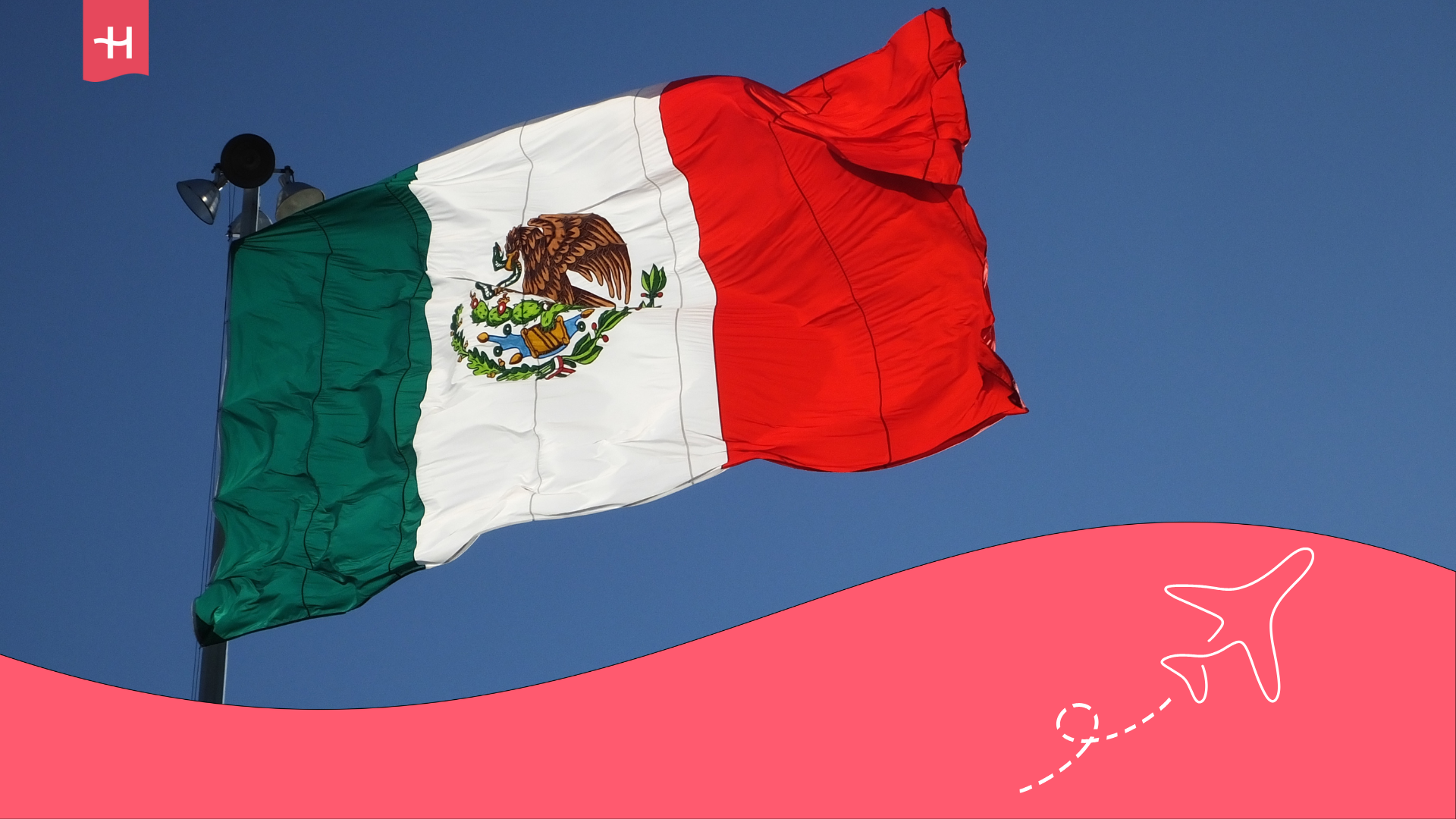Requirements to travel from Spain to Dominican Republic
We show you the requirements to travel to Costa Rica from Spain that you must meet in order to enter this country. Discover them!
Who doesn’t dream of planning a trip to the Caribbean? In this article, we’ll explain the requirements to travel from Spain to the Dominican Republic so you can make your dream come true. Know the required documents for entering the Dominican Republic, whether you’re a digital nomad, student, entrepreneur, or tourist.
Check our tips on passport validity, round-trip tickets, accommodation address, health insurance, and immigration requirements.
Tips for travelling to the Dominican Republic from Spain
Our first tip, while not mandatory, ensures safer travel from Spain to the Dominican Republic upon arrival. For example, staying connected right away helps you navigate, contact your accommodation, or handle any unexpected issues easily. If you are travelling as a tourist, Holafly’s eSIM with unlimited data will help you check maps, access bookings, share photos with family in Spain, and solve issues quickly for just $7.90 a day.
On the other hand, if you‘re planning a longer stay, Holafly Connect plans are the best option with reach to more than 170 destinations. The unlimited plan lets you connect multiple devices and work anywhere in the country for €64.90 ($67.90) per month.
Important: If you are a frequent traveler and want to stay connected without worrying about expensive roaming or looking for a new SIM at every destination, Holafly’s subscription plans are for you. With a single eSIM, enjoy internet in more than 170 countries for a fixed price and no surprises on your bill. Travel without limits and connect easily and securely! 🚀🌍

After this tip on connectivity, we start with the mandatory requirements for travelling to the Dominican Republic from Spain.
1. Flight ticket to the Dominican Republic and back to Spain
One of the requirements for travelling to the Dominican Republic from Spain as a tourist is to show a return flight ticket to Spain. Migration authorities will ask for this ticket to prove you don’t plan to stay beyond the allowed time.
It’s important to note that this document is only required for tourists staying less than 30 days in the country. If you’re traveling with a visa, as we’ll explain in the next section, it’s not required.
2. Tourist, residence or work visas for Dominican Republic
If your stay in the Dominican Republic exceeds 30 days, you’ll need to apply for the appropriate visa based on your travel purpose: Tourism, business, studies, work, digital nomadism, or permanent residence. Research the application process in advance, as some visas may take months to be approved. We recommend not purchasing your ticket until the visa is granted. We explain in detail when it’s necessary to apply for these visas:
- Tourism: Spanish citizens can stay in this country for a maximum of 30 days, so it isn’t necessary to present a visa. However, you must obtain a tourist card, which is included in the air ticket. If it’s not included, you can purchase it at the airport before passing through immigration or via the Dominican Republic’s Tax Office website. The cost is approximately $10.
- Business: You’ll need a business visa (NM1) if you visit the country for meetings or professional activities, but not to establish residency.
- Studies: Students must apply for a student visa (E), which is valid for one year and is renewable.
- Work: To be able to work legally in this destination, it’s mandatory to obtain a work visa (VTT), with which you obtain a temporary residence permit.
- Permanent residence: If you plan to stay in the Dominican Republic indefinitely, you must apply for a residence visa (RS) before entering the country.
3. Spanish passport
Another essential requirement for travelling to the Dominican Republic from Spain is to present a valid passport with at least six months of validity. Therefore, check your passport and, if necessary, request a renewal at the nearest police station or passport office in Spain. It’s important to book an appointment in advance, which you can do through the official passport appointment website (www.citapreviadnie.es).
4. Address of the place of accommodation in the Dominican Republic
Another requirement for travelling to the Dominican Republic from Spain is to present a document showing your accommodation address to immigration authorities. This residence can be a hotel, a co-living, Airbnb, your own home or that of a relative. In case of any incident involving a foreign citizen, Dominican police can locate them through this address to monitor tourist entry.
5. Proof of financial solvency
For travelling to the Dominican Republic from Spain, you must prove you have sufficient financial resources to cover your stay. This proof of financial solvency ensures that Spanish travelers can support themselves without relying on Dominican social assistance. We explain in more detail:
- Type of evidence: You can provide recent bank statements from your savings account, credit cards with the available limit or traveller’s cheques.
- Minimum amount: We recommend a minimum of approximately $100-150 per person per day . For example, for a two-week stay, it’d be prudent to have between $ 1,400 and $ 2,100. This covers accommodation, meals, transport and leisure.
6. Pass migration control in Dominican Republic
The immigration control involves migration officers verifying that you have all required documents and meet the entry criteria for the country. They’ll ask questions about the purpose of your stay, its duration, the places you plan to visit, your return date, and your visa, if applicable.
This step is crucial for your entry into the Dominican Republic, so we recommend keeping all documents in an easily accessible folder, with originals and copies in case anything gets lost. In addition, you should maintain a calm attitude, respond courteously and in a clear and precise manner.
8. Health insurance
The health insurance is only a mandatory requirement for traveling to the Dominican Republic from Spain if you hold a visa. As a tourist, you generally won’t be required to have medical insurance, but it’s advisable to get one for any health emergencies or hospital admissions.
We consider it a small investment that can save you a lot of money, as Dominican medical costs are high. Here you’ll find more information on the compulsory medical insurance required for entry into the country:
- Tourist visa: Tourists entering the country for recreational or leisure activities aren’t required to present medical insurance.
- Work and temporary residence visa: Those traveling to the Dominican Republic to work or settle temporarily must obtain health insurance that meets the immigration authorities’ requirements. This includes minimum coverage for medical expenses, hospitalisation and repatriation.

Other travel tips for the Dominican Republic
We continue with more tips and advice for Spanish travellers in the Caribbean. These recommendations aren’t mandatory for travelling to the Dominican Republic from Spain, but they will help ensure a smoother and safer stay.
Travel insurance for the Dominican Republic
Do you need travel insurance to enter this country? The answer is no, no one is going to require this policy at immigration access, but you can’t imagine the headaches it can save you. Booking international travel insurance will protect your luggage in case of loss, rebook flights or hotels in case of cancellations, and cover medical emergencies if you don’t have health insurance.
Travel insurance offers cover including medical assistance, repatriation and insurance for cancellation or interruption of the trip. It’s important to choose a plan that suits your needs and length of stay.
Driving licence in the Dominican Republic
If you plan to explore the Dominican Republic by car, it’s important that you have the proper driving documents with you. Spanish tourists wishing to rent a vehicle can use their valid driver’s license from their home country. However, it’s recommended to accompany it with an international driving permit, as this document simplifies verification by local authorities.
The international permit is a translation of your driving licence and can be issued in Spain before your trip. In the Dominican Republic, car rental companies require both documents to ensure you meet the legal driving requirements. In addition, driving is an opportunity to explore both tourist and less-travelled areas of the country.
Recommended vaccines for the Dominican Republic
Vaccines aren’t mandatory for travelling to the Dominican Republic from Spain, but it’s advisable to be up to date with certain immunizations for protection during the trip. Here are the most important vaccinations and the reasons to get them:
- Routine vaccinations: Make sure you have up-to-date basic vaccinations such as tetanus, diphtheria, pertussis, polio and measles, mumps and rubella (MMR). These vaccines are essential to maintain overall protection against infectious diseases.
- Hepatitis A and B: Hepatitis A is transmitted by contaminated food or water and hepatitis B by contact with body fluids (this includes tattoos or medical procedures).
- Typhoid fever: If you plan to travel to areas with poor hygiene or eat street food, this disease spreads through contaminated food and water.

Frequently Asked Questions about requirements for travelling to the Dominican Republic from Spain.
To enter the country, you must have a valid passport with at least six months validity, a round-trip ticket (for tourists), and a tourist card (if not included in the ticket). In addition, proof of financial solvency through bank statements or other means is required.
As a Spanish citizen, if you stay less than 30 days, you only need a tourist card, not a visa. Only if you’re travelling for business, study or work, you must apply for the corresponding visas.
It’s evidence that you have sufficient funds to cover your expenses during your stay in the Dominican Republic. We recommend that you demonstrate that you have about $100 to $150 per person per day. For a two-week stay, you should have approximately $1,400 to $2,100.
Yes, Spanish travellers visiting the Dominican Republic as tourists must present a return ticket to show intent to leave.
If your ticket does not include a tourist card, you’ll need to purchase one before your trip or upon arrival in the Dominican Republic. You can purchase it online through the official Migration Department portal or at control points in airports and ports. The approximate cost is $10, and it is valid for 30 days.





 Language
Language 


















 No results found
No results found







